Contents
Landmarks
Print Page List
ACKNOWLEDGMENTS
T here were many people who helped make this book a reality. Thank you to my agents, Eve Attermann and Jaime Carr, who enjoyed my channel and believed that there was a book here.
Thank you to Zachary Smith and Ben Neale for the illustrations and photos that have made this book look awesome.
A huge thanks to my publishing team at Clarkson PotterJenni Zellner, Angelin Borsics, Craig Adams, Kim Tyner, Mark McCauslin, Maureen Clark, Ellie Maddock, Jen Wang, Doris Cooper, and Aaron Wehnerfor bringing this book to life.
And above all, thank you to the fans, who have supported me and my channel from the beginning.
ABOUT THE AUTHOR
J ohn Plant is a thirty-six-year-old Australian citizen living in far north Queensland who has a keen interest in making things from scratch in the wild, without modern tools or materials. He studied science at James Cook University in Cairns and had various jobs, including a lawn mowing run. He started the YouTube channel Primitive Technology in 2015 as a means of sharing his interest online with like-minded people. The channel became an international success thanks to the straightforward presentation of primitive techniques combined with the absence of talking or narration, appealing to people of all languages and cultures.
BASIC TOOL KIT
HAMMER STONE
T he hammer stone is used for shaping other stones into usable tools. Because this tough stone tool is so simple to make, prehuman primates used it to shape their implements before metals became the primary materials for contouring. Youll have a sense of the hammer stones origins if you watch a monkey crack open nuts with a stone.
The hammer stone is a core part of your primitive toolbox; fortunately, it is one of the easiest tools to make. All you need is two hard stones: one will be your hammer stone and the other will be used to shape it.
MATERIALS
1 hard stone (to be made into your hammer stone)
1 hard stone for hammering
Determine the size of your hammer stone. The ideal size of stones used for shaping tools is usually between a golf ball and a tennis ball. But if you intend to pound boulders into shape or hammer wooden stakes into the ground, you will require a larger hammer stone that needs to be wielded with two hands.
To shape the cutting edge of your hammer stone, hold the stone that is being made into your tool in your nondominant hand. Hold the hard stone for hammering in your dominant hand. Brace it on the ground to strike it.
With the hard stone for hammering, strike the very edge of the stone that is being made into your tool at an angle so that a small flake is removed. Stone is removed from the opposite side of the edge you are striking, so never strike the side that is flaking. Be sure to strike the stone at an angle; the energy of perpendicular strikes is absorbed by the stone and can cause catastrophic breakage. Continue striking the stone until you have achieved the desired cutting edge for your hammer stone.
TIP
Quartz is the hardest and toughest stone, so it makes the best hammer stones. If quartz isnt available, choose a stone that is at least as strong as the stone you are shaping. Avoid using soft stones like chalk or gypsum.
USEFUL HAMMERING TECHNIQUES
Knapping: Make small strikes with your hammer stone in a downward motion near the edge of the stone you are shaping to remove little flakes. Keep the strikes small to avoid removing too much of the stone.
Pecking: Create a more deliberate edge for the stone you are shaping by making small strikes with your hammer stone to form tiny craters in the surface near the edge of the stone. Then grind this uneven, pockmarked finish against a rough stone to smooth out the edge.
STONE BLADES
S imple to make, stone blades are multipurpose staples in a primitive technicians tool kit. Use them for fine cutting and carving work or as knives, scrapers, and awls. Keep a pile of different sizes on hand; the more variety the better. A good way to develop a diverse collection is to save the stone scraps you accumulate from other projects (such as the flakes from the hammer stone you just made) and sharpen them as needed.
TOOLS AND MATERIALS
Scraps from a durable stone (quartz, flint, or obsidian is best)
Hammer Stone ()
Hold the stone scrap in your nondominant hand and make small strikes with the hammer stone in a downward motion to chip small shards off the scrap. Continue chipping until you have achieved the desired shape for your blade.
TIPS
 Follow the direction of the stones natural shape rather than try to create a new shape.
Follow the direction of the stones natural shape rather than try to create a new shape.
 Chip the edges of a dull blade to reveal a new sharp edge.
Chip the edges of a dull blade to reveal a new sharp edge.
 Sharpen long, pointed stones into awls; fashion small chips into all-purpose cutting blades. For heavy-duty tasks, sharpen the edge of a long, flat rock to use as a saw or a carpentry plane.
Sharpen long, pointed stones into awls; fashion small chips into all-purpose cutting blades. For heavy-duty tasks, sharpen the edge of a long, flat rock to use as a saw or a carpentry plane.
HOW TO USE A STONE BLADE
To carve wood, hold the blade against the wood and press down with your thumb on the blunt side to make a notch. Be sure to use a stone blade that is sharp on only one side. To drill wood, twist a pointed stone blade into the wood. Use a larger stone blade to plane the wood, removing rough edges with a scraping motion.
HAND AXE
T he hand axe was the first stone cutting tool I developed; it is best used for light woodcutting tasks rather than large-scale logging. I have used a hand axe to construct structures from logs 6 inches (15 cm) thick, but its hard on your hands, so I dont recommend it (use the Celt Axe, , instead).
Choose a tough, durable stone for your axe blade. I often use basalt, which is common, but flint and obsidian are also good options.
TOOLS AND MATERIALS
1 durable stone (for the axe blade)
Hammer Stone ()
Hold the durable stone in your nondominant hand and determine which side is more blunt. The sharper edge will be your blade for cutting; the blunt edge will be used as a handle.
Strike the edge of the sharp side of the stone with the hammer stone in a downward motion while bracing it against the ground. Flip the stone over and repeat this process on the other side of the blade so that the edge stays roughly straight. The blade will start to look wavy if too much stone is removed from one side; in that case, even it out by flipping the stone over and striking from the other side.
To smooth the handle side of the blade, lightly tap downward on any protruding edges with the hammer stone.

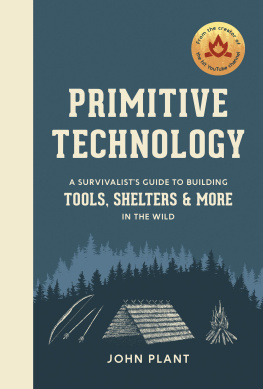
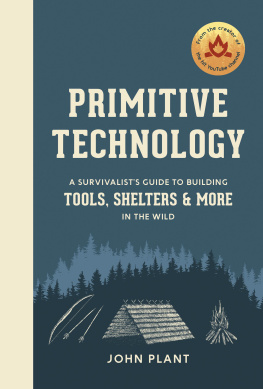





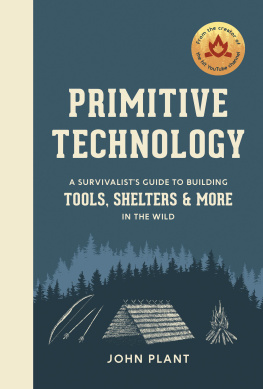
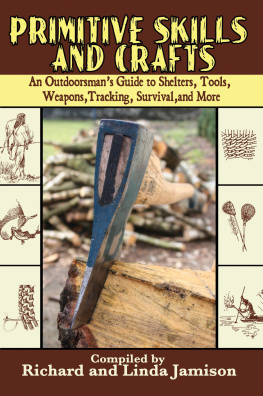
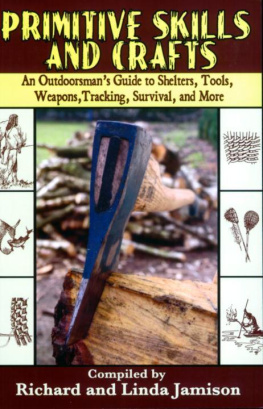




 Follow the direction of the stones natural shape rather than try to create a new shape.
Follow the direction of the stones natural shape rather than try to create a new shape.